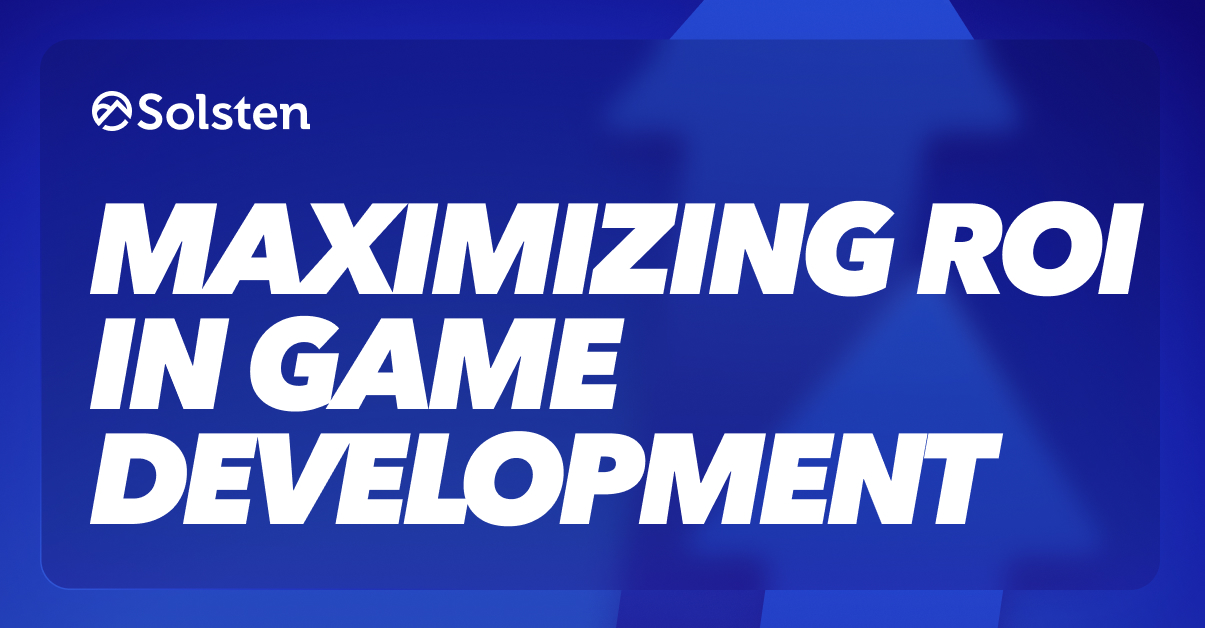As the battle for players’ attention intensifies in the video game industry, one weapon has emerged as a true game-changer: player personas. These personas are an invaluable tool in the ever-competitive battle for player engagement and profitability, yet they remain surprisingly underutilized by most studios. When used correctly, player personas can significantly reduce development risks, enhance user acquisition and retention, and simplify targeted marketing. In this article, we will explore the various ways that player personas can impact a game’s return on investment (ROI). Additionally, we will examine several compelling real-world case studies that demonstrate the effectiveness of these personas in action.
How Do Player Personas Contribute to ROI in Game Development?
Player personas, fictional representations of target audience segments, play a pivotal role in optimizing ROI in game development. By developing a deep understanding of players’ preferences, behaviors, and motivations, game developers can create tailored experiences that resonate with the intended audience. Below are several examples of how personas contribute to ROI.
Targeted Game Design
Player personas enable game developers to align their creative vision with the preferences of their target audience. By considering factors such as age, gaming habits, and preferred genres, development teams can tailor game mechanics, narratives, and aesthetics to deliver a superior gameplay experience.
Reduced Development Risks
Developing games without a clear understanding of the target audience can lead to misaligned design choices and wasted resources. Personas help mitigate these risks by providing valuable insights into players’ expectations, allowing developers to prioritize features that align with the desired experience.
Improved Marketing Strategies
Personas assist in crafting effective marketing campaigns for video games by identifying the ideal audience segments and tailoring promotional efforts accordingly. By understanding players’ pain points, preferences, and motivations, game developers can communicate the unique value of their games more effectively, leading to higher conversion rates and increased sales.
Enhanced User Acquisition & Retention
By leveraging personas, game developers can focus on acquiring and retaining the right users, increasing the chances of sustainable success. Understanding the target audience’s preferred platforms, preferred genres, and the features they value the most allows for more targeted user acquisition campaigns and effective retention strategies.
Strategies for Maximizing ROI with Player Personas
To maximize ROI in game development through personas, game developers should consider employing the following strategies.
Early Persona Development
Start creating player personas early in the development process to inform key decisions. Conduct comprehensive research and collect data on player demographics, preferences, and behaviors to create accurate personas that capture the essence of the target audience.
Iterative Design & Testing
Continuously iterate and test game features, mechanics, and narratives with the help of player personas. Collect feedback from target audience segments to validate assumptions and ensure that the game aligns with their own set of expectations.
Data-Driven Decision Making
Utilize analytics tools and player behavior data to gain insights into how different personas engage with the game. By analyzing metrics such as playtime, completion rates digital downloads, and in-game purchases, developers can make data-driven decisions to optimize the game’s performance and monetization potential.
Personalized Experiences
Leverage player personas to create personalized experiences that cater to different player segments. Implement customization options, adaptive difficulty levels, and tailored content to provide a sense of ownership and enhance player engagement.
Localization & Internationalization
Consider the global nature of the gaming industry by developing personas that encompass gamers from diverse cultural backgrounds and languages. This approach lets game developers create experiences that resonate with players from various regions, expanding the game’s reach and potential market.
How Player Personas Boosted ROI in Game Development: Real-Life Case Studies
The gaming industry is full of examples where the use of player personas has resulted in substantial improvements in ROI. Below are a few noteworthy case studies highlighting the impact of player personas on ROI.
Voodoo Games: Harnessing Data-Driven Audience Insights
Voodoo Games faced a critical juncture with a casual game during the early testing phase. They encountered the challenge of low player retention rates, a common obstacle that can determine the ultimate success or failure of a game.
Persisting with the status quo by simply adding more content without understanding the root cause of low retention could have spelled disaster. A game that fails to retain players risks falling into the vast sea of overlooked and forgotten titles, unable to achieve profitability or a loyal player base.
By turning to Solsten’s Navigator platform, Voodoo Games was able to glean actionable insights into their target audience’s defining characteristics. They didn’t just look at data; they understood it. The team discovered that their players sought a feeling of productivity, a compelling story, and a sense of accomplishment. By adapting the game to fulfill these desires — particularly by separating learning from performance — they achieved a substantial 14% increase in player retention. This strategic pivot not only led to the game’s profitability within a year but also set a precedent for ongoing post-launch optimization, ensuring that the game continues to satisfy and exceed the evolving desires of its audience.
Ten Square Games: Leveraging Solsten’s Navigator for Audience-First Design
Ten Square Games was poised to make a mark in the competitive gaming market, knowing that a conventional approach wouldn’t suffice. They recognized the need to break new ground and appeal to a market beyond the typical gaming demographics.
Without a deep understanding of their target audience, their game risked being just another drop in the ocean of the competitive gaming market, unable to stand out or connect with potential players.
By harnessing the power of Solsten’s Navigator platform, Ten Square Games embraced an audience-first design approach. They identified and focused on five distinct player personas, particularly honing in on two segments that promised high value. Through meticulous journey mapping — from the initial hook and core mechanics to secondary mechanics and long-term engagement strategies — they tailored their game development process for maximum resonance with these key audiences. Their use of Navigator to test concepts against real audience personas meant development was not only aligned but also twice as efficient, significantly reducing the need for multiple prototypes. This strategic process culminated in a game that boasted a unique and playful art style, drawing inspiration from ancient Tokyo and ‘Alice in Wonderland’, ensuring the game was not only creatively distinct but also primed for success upon its release.
Tilting Point: Embracing Audience Psychology for Engaging Experiences
When Tilting Point wanted to ramp up the competitive edge in their casual puzzle game, Languinis, they thought that introducing leaderboards would foster a sense of competition.
However, their initial plans overlooked the underlying preferences of their players, risking the introduction of features that could potentially misalign with their audience’s core values, potentially dampening engagement and sales.
Solsten’s AI-powered Traits platform illuminated a path forward. Tilting Point discovered their players valued altruism and collaboration over rivalry. This insight prompted a strategic pivot to “Crew Events,” which leveraged cooperative competition. Players were incentivized through shared rewards and recognition for team contributions, aligning the game’s dynamics with the players’ proclivities for friendship and community.
The shift to cooperative play not only resonated with the players, leading to heightened engagement and acclaim but also translated to improved game metrics. This alignment with player psychology eliminated the guesswork in game design, solidifying the game’s position in the market.
Tilting Point’s experience with Solsten’s Traits platform underscores the transformative potential of integrating psychological insights into game development. Understanding player psychology ahead of implementation allows gaming companies to craft experiences that resonate on a deeper level, fostering engagement and loyalty. Solsten’s technologies thus provide a roadmap for tapping into new audience segments, bridging the gap between psychological understanding and gaming experiences.
The Power of Player Personas for Maximizing ROI
Player personas provide a powerful framework for maximizing ROI in game development. By leveraging these fictional representations of target audience segments, game developers can align their creative vision, reduce risks, optimize marketing strategies, and enhance user acquisition and retention. By employing strategies such as early persona development, iterative design, data-driven decision-making, personalized experiences, and global localization, game developers can create games that resonate with players, resulting in greater success and profitability.



